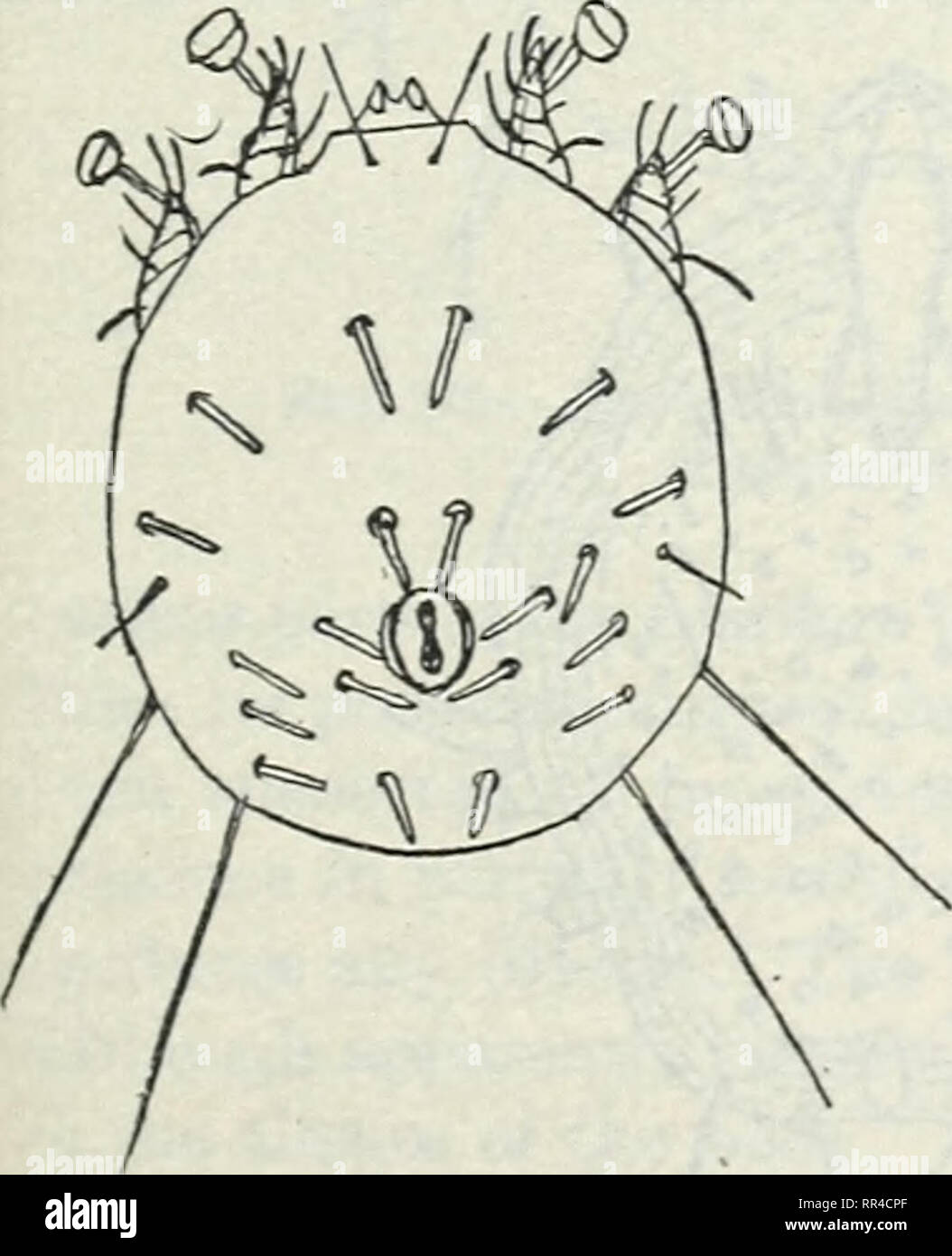. The Acarina or mites. A review of the group for the use of economic entomologists. Mites. few days apart, in order to kill any mites that may have hatched since the first applica- tion. All underclothes and bedding should be ^Yashed in boiling-hot water. The Xorwegian itch mite is S. scabei-crustosae Furstb. It produces a coarse, leprous crust infested on the inner surface with myriads of the mites. It is much less common than the other species. Nearly all of the domestic animals may harbor a species of Sarcoptes peculiar to them. The more com- mon are those of the hog, horse, and sheep. The

Image details
Contributor:
Library Book Collection / Alamy Stock PhotoImage ID:
RR4CPFFile size:
7.2 MB (188.7 KB Compressed download)Releases:
Model - no | Property - noDo I need a release?Dimensions:
1424 x 1755 px | 24.1 x 29.7 cm | 9.5 x 11.7 inches | 150dpiMore information:
This image is a public domain image, which means either that copyright has expired in the image or the copyright holder has waived their copyright. Alamy charges you a fee for access to the high resolution copy of the image.
This image could have imperfections as it’s either historical or reportage.
. The Acarina or mites. A review of the group for the use of economic entomologists. Mites. few days apart, in order to kill any mites that may have hatched since the first applica- tion. All underclothes and bedding should be ^Yashed in boiling-hot water. The Xorwegian itch mite is S. scabei-crustosae Furstb. It produces a coarse, leprous crust infested on the inner surface with myriads of the mites. It is much less common than the other species. Nearly all of the domestic animals may harbor a species of Sarcoptes peculiar to them. The more com- mon are those of the hog, horse, and sheep. They work like the human species, and are amenable to the same treatment, or that used for sheep scab. The species of the genus Psoroptes have piercing mandibles, and do not burrow. One species, P. com- munis var. ovis Hering (figs. 268, 269), is the cause of sheep scab, a serious disease of this animal throughout the world. The fleece of scabby sheep presents a rough appearance, the wool in places being stuck together in greasy masses. The mites are most abundant around the edges of an infested patch and increase very rapidly. The eggs hatch in 2 or 3 days, and in 15 days they become mature. The female lives for several weeks and deposits a great number of eggs, commonly in patches of about 20 each. By rubbing against posts, trees, and fences patches of wool, containing mites and eggs, are removed which may infest healthy sheep rub- bing against the same places from other causes. The loss is usually heaviest in autumn and early winter. Sheep if not treated may soon become so enfeebled through fatigue and lack of rest as to die. The best remedy is to dip the sheep in some poisonous solution. Various dips are in use, mostly based on tobacco, sulphur, tar, or lime. The famous Rutherford dip, which has been very successful, is prepared by using 1 pound of tobacco, 1 pound of sulphur, and 4 gallons of water. The tobacco is steeped for some time in water, the sulphur is added to this t